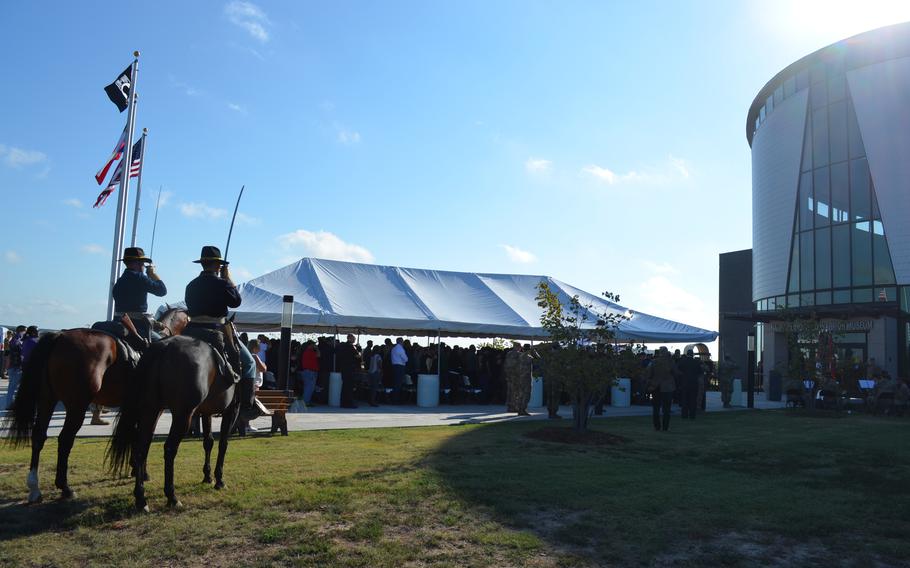
Troopers from the 1st Cavalry Division Horse Cavalry Detachment look on during an opening ceremony for the National Mounted Warrior Museum at Fort Cavazos, Texas, on Sept. 18, 2024. (Rose L. Thayer/Stars and Stripes)
FORT CAVAZOS, Texas – After 14 years and $14.5 million, the National Mounted Warrior Museum will open Thursday to the public to share the story of how America’s soldiers have used horses, bicycles, helicopters and tanks to fight in every conflict from the Revolutionary War to the War on Terror.
The museum is intended to honor all who have served in the mounted units, particularly those at Fort Cavazos, which is home to the 1st Cavalry Division and III Armored Corps. While much of the museum is about the wars in which they fought, there’s a particular focus on the troops, their families and even the communities that were displaced to establish the base during World War II.
“This museum gives an opportunity for Fort Cavazos soldiers and family members to understand and to appreciate the heritage that they bear as members of the profession of arms,” Brig. Gen. Geoffrey Van Epps, deputy commander for maneuver of III Armored Corps at Fort Cavazos, said Wednesday during a ceremony to open the museum.
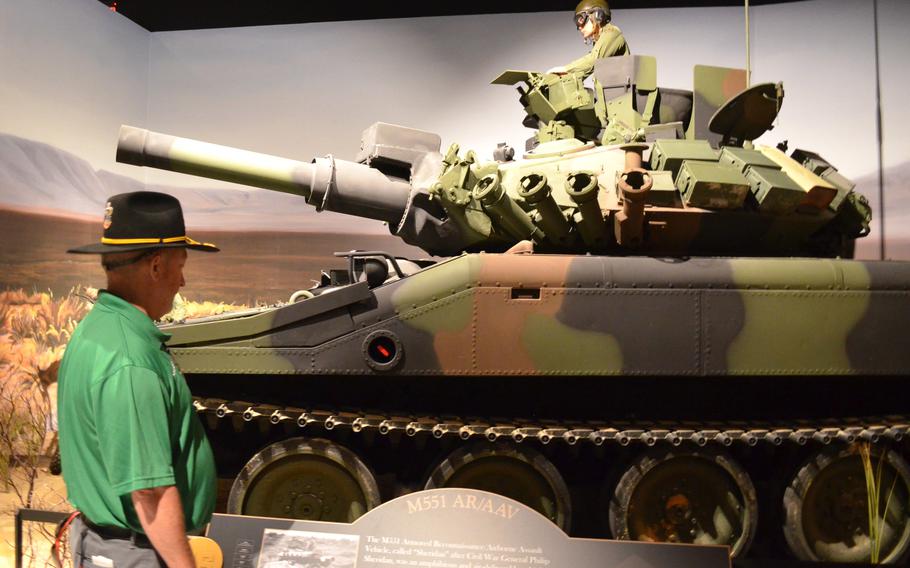
Retired Command Sgt. Maj. Robb Ochsner reads the plaque on a M-551 Sheridan light tank at the National Mounted Warrior Museum at Fort Cavazos, Texas, on Sept. 18, 2024. (Rose L. Thayer/Stars and Stripes)
He spoke alongside representatives from the Army and the National Mounted Warfare Foundation, which raised money, designed and constructed the facility that will now be transferred to the service. The foundation will continue to raise funds to support the facility and build a $15 million expansion that includes classrooms.
The foundation projects 377,000 visitors in the museum’s first year with about 70% traveling from outside the community.
The concept of a museum to honor cavalry units at Fort Cavazos began in the 1980s with retired Gen. Robert Shoemaker and began to take form in 2010 with the creation of the foundation to raise money for the facility, said retired Lt. Col. Bob Crouch, vice president of the foundation.
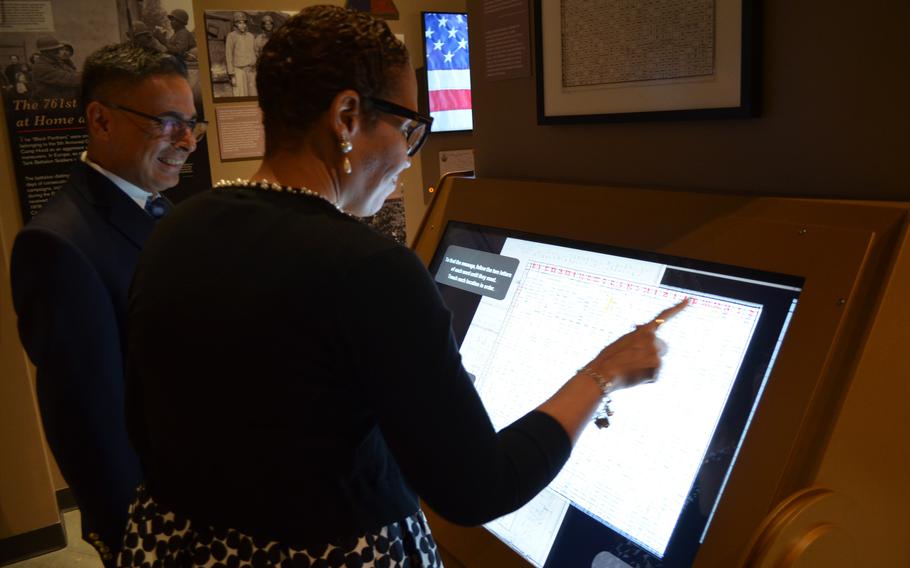
Sherry McDowney and Rudy Rocha try to decode encrypted messages in an interactive exhibit at the National Mounted Warrior Museum at Fort Cavazos, Texas, on Sept. 18, 2024. (Rose L. Thayer/Stars and Stripes)
The more than 12,000 square-foot facility features a main gallery and a rotating gallery that now displays combat camera work from World War II. It also includes nods to two famous soldiers who were once assigned to the base – Jackie Robinson and Elvis Presley.
Two former museums at the base that focused on the 1st Cavalry Division and the 3rd Cavalry Regiment were folded into the new space.
Visitors enter through a 4,900 square-foot rotunda with glass panels forming a triangle encased in steel panels. Windows look out onto 1st Cavalry Division horse stables and pasture nearby. Once inside, visitors are greeted by a display of a soldier flying a drone, a tank and a helicopter, as well as a trooper on horseback.
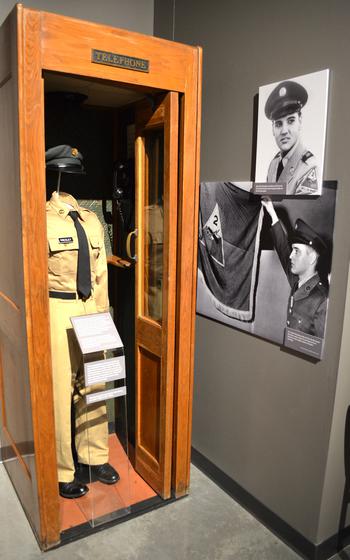
A display to commemorate singer Elvis Presley’s time in the Army, which included a stint at Fort Hood, Texas, now known as Fort Cavazos. It is part of the main gallery of the National Mounted Warrior Museum at Fort Cavazos, Texas, on Sept. 18, 2024. (Rose L. Thayer/Stars and Stripes)
In the main gallery, a path winds through the history of combat as seen through the lens of mounted troops — horses, trucks, track vehicles and helicopters. One display highlights a test of using bicycles with a Buffalo Soldier unit in the 1890s.
The 25th Infantry conducted bicycle rides through the west, including a 41-day, 1,900-mile journey between Missoula, Mont., and St. Louis.
Another display included a dirt bike, which the Army briefly used for reconnaissance missions alongside the M-551 Sheridan light tank.
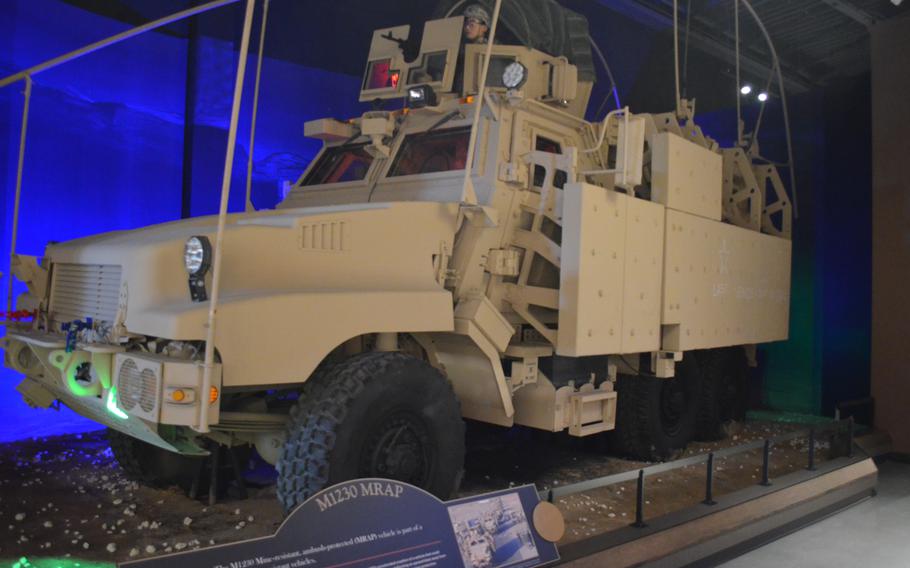
A Mine-Resistant Ambush Protection vehicle, the last American military vehicle to leave Iraq in December 2011, is on display at the National Mounted Warrior Museum at Fort Cavazos, Texas, on Sept. 18, 2024. (Rose L. Thayer/Stars and Stripes)
Retired Command Sgt. Maj. Robb Ochsner worked on Sheridan tanks during his 32-year Army career and now volunteers for the museum. For the one on display, he helped move the turret so it sat facing forward. He also rounded up accessories to put on vehicles to help build realism in displays, such as canvas rucksacks, ammo cans and rolls of coiled barbed wire.
“I’m a little amazed,” he said of seeing the museum finished and people walking through during a preview event Wednesday. “When we first moved the vehicles inside, for the longest time, it was just these vehicles in a big empty room.”
Once the walls were built to form the paths, he could finally see how the empty warehouse would transform into a museum.
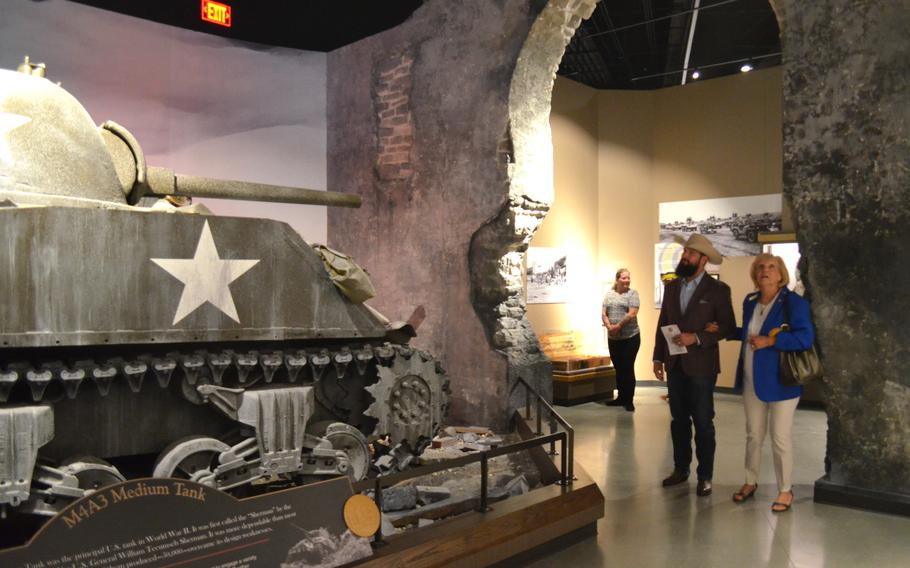
Visitors enter the main gallery of the National Mounted Warrior Museum at Fort Cavazos, Texas, on Sept. 18, 2024. (Rose L. Thayer/Stars and Stripes)
Other stops along the gallery path highlight the changes that have come over the years, such as the acceptance of women in combat units. A stop at the end explains the change of the name Fort Hood, which recognized an officer of the Confederate army, to Fort Cavazos, which honors former III Corps commander Gen. Richard Cavazos.
Along the way are interactive exhibits to experience what a tank gunner would see using night vision or what it takes to decode encrypted messages.
Crouch began working at the museum foundation after his 2011 retirement and has a particular fondness for the section on the Vietnam War. His father Lt. Col. Harry Crouch served in the 1st Cavalry Division during the Ia Drang campaign in 1965.
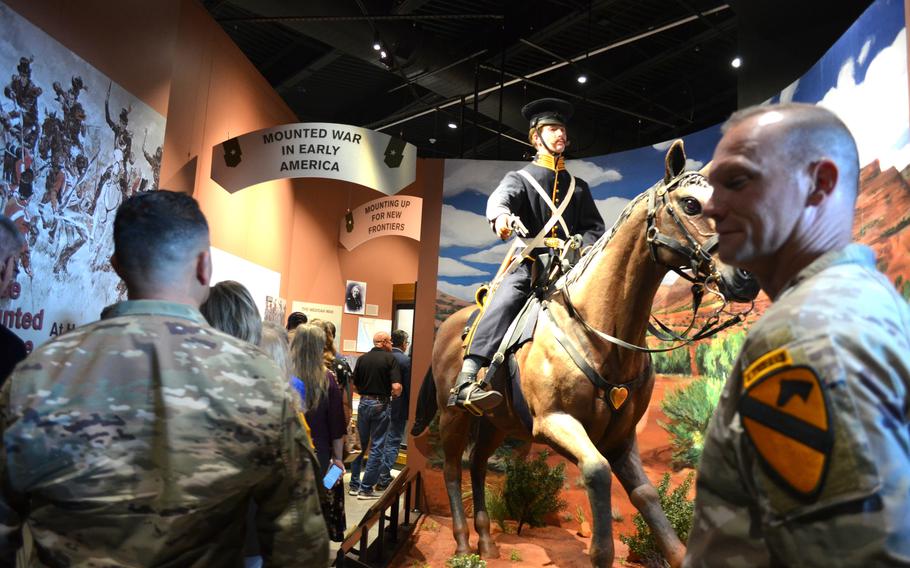
Visitors enter the main gallery of the National Mounted Warrior Museum at Fort Cavazos, Texas, on Sept. 18, 2024. (Rose L. Thayer/Stars and Stripes)
The section features a UH-1 “Huey” helicopter. As visitors approach, wind begins to blow, moving the grass beneath it, and lights flash across the ground. It gives Crouch a feeling of what his father would have seen.
“We didn’t want visitors to just see something and move on. We wanted them to step into the story and feel what it was like to serve in the Vietnam era,” he said.
The museum joins more than 25 others under the Army’s care, said Charles Bowery, executive director of the U.S. Army Center of Military History. Spread across the U.S. and in Germany and South Korea, most of the museums focus on specific units or specialties, while the National Museum of the U.S. Army at Fort Belvoir, Va., looks at the entire history of the service.
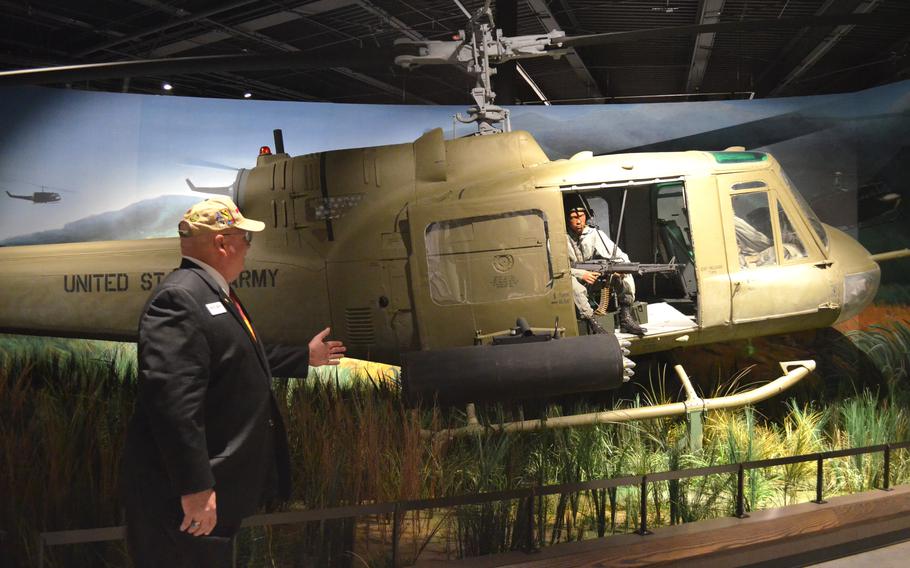
Retired Lt. Col. Bob Crouch, vice president of the National Mounted Warfare Foundation, discusses a UH-1 “Huey” helicopter on display at the National Mounted Warrior Museum at Fort Cavazos, Texas, on Sept. 18, 2024. (Rose L. Thayer/Stars and Stripes)
“They tell different types of stories, but all of them circle back to the soldier … and they tell these stories through the experiences of those soldiers,” Bowery said.
The National Mounted Warrior Museum formally opens to the public at 10 a.m. Thursday. It will be open 10 a.m. to 5 p.m. Tuesday through Sunday.